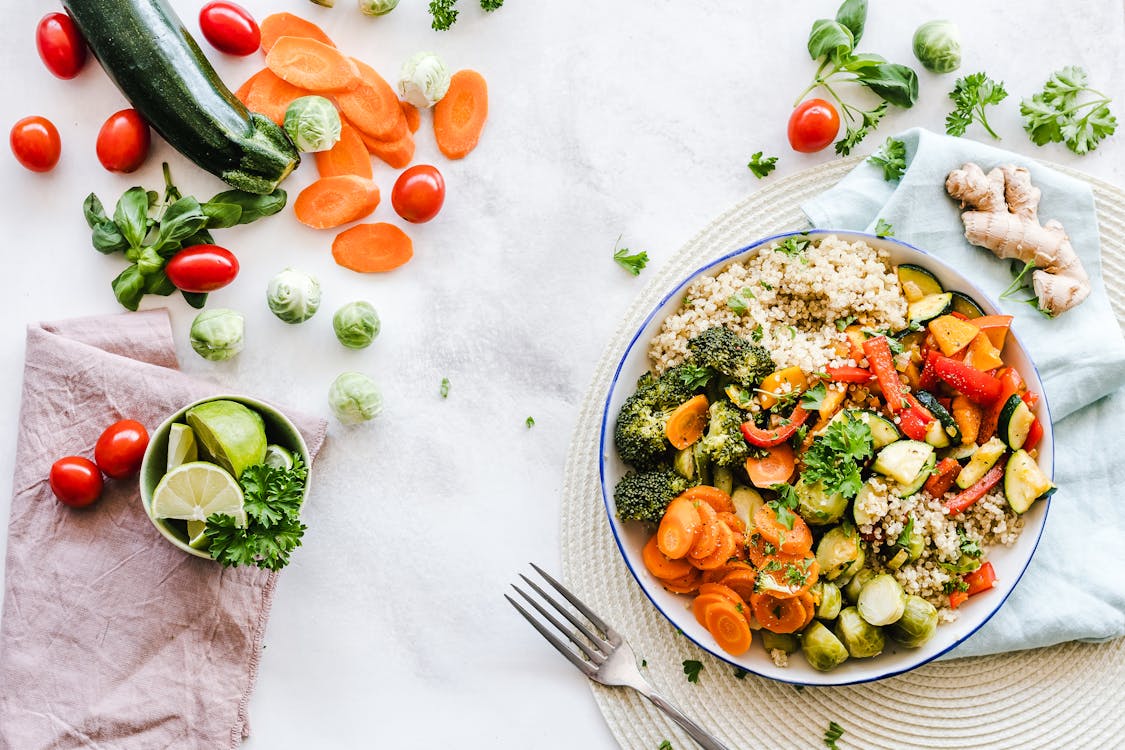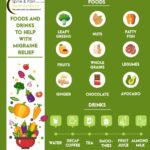Is Oatmeal A Good Diet Food? Absolutely! Oatmeal boasts a wealth of benefits, from promoting heart health to aiding in weight management, making it an excellent choice for a balanced diet. This article, brought to you by FOODS.EDU.VN, will explore the science-backed advantages of oatmeal, delve into its nutritional profile, and provide creative ways to incorporate this versatile grain into your daily meals. You will gain a complete understanding of oatmeal’s role in a healthy lifestyle, discover delicious recipes, and learn how to maximize its health benefits.
1. Understanding Oatmeal: A Nutritional Powerhouse
Oatmeal isn’t just a breakfast staple; it’s a nutritional powerhouse packed with vitamins, minerals, and fiber. Understanding its composition is the first step in appreciating its value as a diet food.
1.1. What is Oatmeal?
Oatmeal is made from processed oat grains. These grains are typically rolled or milled to create various forms, including rolled oats (old-fashioned oats), quick oats, and steel-cut oats.
1.2. Nutritional Composition
A one-cup serving of cooked oatmeal provides approximately:
- Calories: 166
- Protein: 6 grams
- Fiber: 4 grams
- Carbohydrates: 28 grams
- Fat: 4 grams
- Manganese: 59-76% of the daily recommendation
- Thiamin (Vitamin B1): 15% of the daily recommendation
- Magnesium: 8% of the daily recommendation
- Iron: 4% of the daily recommendation
- Phosphorus: 12% of the daily recommendation
- Zinc: 7% of the daily recommendation
Oatmeal is a significant source of complex carbohydrates and soluble fiber, particularly beta-glucan, which is crucial for its health benefits.
1.3. Types of Oatmeal
| Type of Oatmeal | Processing Level | Texture | Cooking Time | Best For |
|---|---|---|---|---|
| Steel-Cut Oats | Minimally processed; chopped oat groats | Chewy | 20-30 minutes | Hearty breakfasts, overnight oats |
| Rolled Oats (Old-Fashioned) | Steamed and rolled into flakes | Soft, slightly chewy | 5-10 minutes | Versatile; baking, granola, overnight oats |
| Quick Oats | Rolled oats processed into thinner flakes | Soft | 1-2 minutes | Quick breakfasts, thickening agent |
| Instant Oats | Pre-cooked, dried, and often flavored | Very soft | Just add hot water | Convenient, but often higher in sugar |
| Oat Bran | Outer layer of the oat groat | Fine | 3-5 minutes | Adding to smoothies, baking |


Each type of oatmeal offers a unique texture and cooking time, allowing for versatility in meal preparation.
2. Health Benefits of Oatmeal: Why It’s a Good Diet Food
Oatmeal’s health benefits extend far beyond simple nutrition. It plays a significant role in improving heart health, managing weight, and stabilizing blood sugar levels.
2.1. Heart Health
Extensive research supports the heart-healthy benefits of oatmeal, primarily due to its high beta-glucan content.
- Lowering Cholesterol: Beta-glucan, a soluble fiber in oatmeal, reduces total and LDL (“bad”) cholesterol levels by binding to cholesterol-rich bile acids in the intestine and excreting them from the body. According to a study published in the “American Journal of Clinical Nutrition,” consuming 3 grams of beta-glucan daily can lower LDL cholesterol by 5-10%.
- Reducing Blood Pressure: Some studies suggest that oatmeal may help lower blood pressure, contributing to overall cardiovascular health. A meta-analysis published in the “Journal of the American College of Nutrition” found that oat consumption was associated with a significant reduction in both systolic and diastolic blood pressure.
- Preventing Atherosclerosis: The antioxidant compounds in oatmeal, such as avenanthramides, help prevent the oxidation of LDL cholesterol, a critical step in the development of atherosclerosis (hardening of the arteries).
2.2. Weight Management
Oatmeal is an excellent food for weight management due to its high fiber content and its ability to promote satiety.
- Promoting Fullness: The soluble fiber in oatmeal absorbs water, expanding in the stomach and promoting a feeling of fullness. This can help reduce overall calorie intake by curbing hunger and preventing overeating.
- Controlling Appetite: By slowing down the digestion process, oatmeal helps regulate blood sugar levels and prevent the rapid spikes and crashes that can lead to cravings and hunger.
- Supporting Gut Health: The fiber in oatmeal feeds beneficial gut bacteria, which can influence metabolism and weight management. A healthy gut microbiome is linked to improved weight control and overall health.
2.3. Blood Sugar Control
Oatmeal can help improve blood sugar control, making it a beneficial food for individuals with diabetes or insulin resistance.
- Stabilizing Blood Sugar Levels: The soluble fiber in oatmeal slows down the absorption of glucose into the bloodstream, preventing rapid spikes in blood sugar levels after meals.
- Improving Insulin Sensitivity: Regular consumption of oatmeal may improve insulin sensitivity, allowing cells to use glucose more effectively and reducing the risk of insulin resistance.
- Reducing the Risk of Type 2 Diabetes: Studies have shown that diets rich in whole grains like oats are associated with a lower risk of developing type 2 diabetes. A study published in “Diabetes Care” found that individuals who consumed the most whole grains had a 20-30% lower risk of developing type 2 diabetes compared to those who consumed the least.
2.4. Digestive Health
The fiber in oatmeal supports a healthy digestive system by promoting regular bowel movements and preventing constipation.
- Promoting Regularity: The insoluble fiber in oatmeal adds bulk to the stool, facilitating the passage of waste through the digestive tract.
- Preventing Constipation: By softening the stool and promoting regular bowel movements, oatmeal helps prevent constipation and other digestive issues.
- Nourishing Gut Bacteria: The soluble fiber in oatmeal serves as a prebiotic, nourishing beneficial gut bacteria and promoting a healthy gut microbiome.
2.5. Other Potential Benefits
In addition to its well-established benefits, oatmeal may offer other potential health advantages.
- Antioxidant Properties: Oatmeal contains antioxidants, such as avenanthramides, which help protect cells from damage caused by free radicals.
- Skin Health: Oatmeal has been used for centuries to soothe irritated skin. Colloidal oatmeal, made from finely ground oats, is often added to bathwater or skincare products to relieve itching and inflammation.
- Immune Function: Some studies suggest that beta-glucan in oatmeal may enhance immune function by stimulating the activity of immune cells.
3. Incorporating Oatmeal into Your Diet: Creative and Delicious Ideas
Oatmeal is incredibly versatile and can be incorporated into your diet in numerous ways, from traditional breakfast dishes to innovative snacks and desserts.
3.1. Classic Oatmeal Breakfast
The most common way to enjoy oatmeal is as a warm breakfast cereal. Here’s how to make it:
- Choose Your Oats: Select your preferred type of oats (steel-cut, rolled, or quick oats).
- Combine Oats and Liquid: In a saucepan, combine 1/2 cup of oats with 1 cup of water or milk (dairy or non-dairy).
- Cook: Bring the mixture to a boil, then reduce heat and simmer for the recommended time (depending on the type of oats).
- Customize: Add your favorite toppings, such as fresh fruit, nuts, seeds, spices, or a drizzle of honey or maple syrup.
3.2. Overnight Oats
Overnight oats are a convenient and nutritious make-ahead breakfast option.
- Combine Ingredients: In a jar or container, combine 1/2 cup of rolled oats, 1 cup of milk (dairy or non-dairy), 1 tablespoon of chia seeds, and your favorite toppings (fruit, nuts, spices).
- Refrigerate: Stir well, cover, and refrigerate overnight (or for at least 2 hours).
- Enjoy: In the morning, give it a stir and enjoy cold.
3.3. Savory Oatmeal
Oatmeal can also be enjoyed as a savory dish.
- Cook Oats: Cook oatmeal with water or broth instead of milk.
- Add Savory Toppings: Top with ingredients like sautéed vegetables, a fried egg, avocado, cheese, or a sprinkle of herbs.
- Season: Season with salt, pepper, and other spices to taste.
3.4. Oatmeal Smoothies
Adding oatmeal to smoothies can boost their fiber content and provide a sustained energy release.
- Blend Ingredients: Combine 1/2 cup of cooked oatmeal (cooled), your favorite fruits (berries, banana), a liquid base (milk, yogurt, juice), and any additional ingredients (protein powder, greens).
- Blend Until Smooth: Blend until smooth and creamy.
- Adjust Consistency: Add more liquid if needed to achieve your desired consistency.
3.5. Oatmeal Baking
Oatmeal can be used in a variety of baked goods, adding texture and nutritional value.
- Oatmeal Cookies: Replace some of the flour in your favorite cookie recipe with rolled oats for a chewy texture and added fiber.
- Oatmeal Muffins: Add oats to muffin batter for a hearty and nutritious breakfast or snack.
- Oatmeal Bread: Incorporate oats into bread dough for a wholesome and flavorful loaf.
- Granola Bars: Use oats as the base for homemade granola bars, adding nuts, seeds, dried fruit, and a binder like honey or maple syrup.
3.6. Other Creative Uses
- Oatmeal as a Thickening Agent: Use ground oatmeal or oat flour to thicken soups, stews, and sauces.
- Oatmeal as a Coating: Use crushed oats as a coating for chicken, fish, or vegetables before baking or frying.
- Oatmeal as a Topping: Sprinkle toasted oats on top of yogurt, salads, or desserts for added texture and flavor.
4. Tips for Maximizing the Health Benefits of Oatmeal
To fully harness the health benefits of oatmeal, consider these tips.
4.1. Choose the Right Type of Oatmeal
Opt for steel-cut or rolled oats over instant oats whenever possible, as they are less processed and have a lower glycemic index.
4.2. Watch Your Portion Sizes
While oatmeal is a healthy food, it’s still important to be mindful of portion sizes. Stick to a 1/2 cup serving of dry oats per meal.
4.3. Avoid Added Sugars
Limit or avoid adding refined sugars, syrups, or sweetened toppings to your oatmeal. Instead, sweeten it naturally with fruit, spices, or a small amount of honey or maple syrup.
4.4. Add Healthy Fats and Protein
Enhance the satiety and nutritional value of your oatmeal by adding healthy fats (nuts, seeds, avocado) and protein (Greek yogurt, protein powder).
4.5. Stay Hydrated
Drink plenty of water throughout the day to support the digestion of fiber and prevent constipation.
4.6. Read Labels Carefully
When purchasing oatmeal products, read the labels carefully to check for added sugars, sodium, and artificial ingredients.
5. Potential Downsides and Considerations
While oatmeal is generally safe and beneficial for most people, there are a few potential downsides and considerations to keep in mind.
5.1. Phytic Acid Content
Oats contain phytic acid, which can bind to minerals like iron, zinc, and calcium, reducing their absorption. However, soaking or fermenting oats before cooking can help reduce the phytic acid content.
5.2. Gluten Contamination
Oats are naturally gluten-free, but they can be contaminated with gluten during processing if they are grown or processed in facilities that also handle wheat, barley, or rye. If you have celiac disease or gluten sensitivity, choose certified gluten-free oats.
5.3. High Carbohydrate Content
Oatmeal is relatively high in carbohydrates, so individuals with diabetes or insulin resistance should monitor their blood sugar levels and adjust their portion sizes accordingly.
5.4. Potential for Digestive Issues
Some people may experience digestive issues like bloating, gas, or diarrhea after consuming oatmeal, particularly if they are not used to eating high-fiber foods. Start with small portions and gradually increase your intake to allow your digestive system to adjust.
5.5. Allergic Reactions
Although rare, some people may be allergic to oats. Symptoms of an oat allergy can include skin rashes, hives, itching, swelling, and digestive problems.
6. Expert Opinions and Scientific Studies
Numerous experts and scientific studies support the health benefits of oatmeal.
- The American Heart Association: Recommends eating whole grains like oats as part of a heart-healthy diet.
- The Academy of Nutrition and Dietetics: Recognizes oatmeal as a nutritious food that can help lower cholesterol and improve blood sugar control.
- Harvard T.H. Chan School of Public Health: Highlights the benefits of oats for heart health, weight management, and digestive health.
- Studies Published in Peer-Reviewed Journals: Such as the “American Journal of Clinical Nutrition,” “Journal of the American College of Nutrition,” and “Diabetes Care,” have consistently demonstrated the health benefits of oatmeal.
7. Oatmeal vs. Other Breakfast Options
Compared to other common breakfast options, oatmeal offers several advantages.
| Breakfast Option | Nutritional Benefits | Potential Drawbacks |
|---|---|---|
| Oatmeal | High in fiber, vitamins, and minerals; promotes heart health, weight management, and blood sugar control | Can be bland; may contain phytic acid; potential for gluten contamination |
| Cereal (Processed) | Convenient; often fortified with vitamins and minerals | High in sugar and refined carbohydrates; low in fiber; may contain artificial ingredients |
| Eggs | High in protein and healthy fats; rich in vitamins and minerals | High in cholesterol; may not be suitable for individuals with certain dietary restrictions |
| Yogurt | High in protein and calcium; contains probiotics | May be high in sugar; may contain artificial sweeteners or flavors |
| Toast (White Bread) | Convenient; readily available | Low in fiber, vitamins, and minerals; high in refined carbohydrates |
Oatmeal stands out as a nutrient-dense, high-fiber option that offers a wide range of health benefits.
8. Delicious Oatmeal Recipes to Try
Here are a few delicious oatmeal recipes to get you started:
8.1. Classic Apple Cinnamon Oatmeal
Ingredients:
- 1/2 cup rolled oats
- 1 cup water or milk
- 1/2 apple, diced
- 1/4 teaspoon cinnamon
- 1 tablespoon chopped nuts (walnuts, pecans)
- 1 teaspoon honey or maple syrup (optional)
Instructions:
- Combine oats, water or milk, and apple in a saucepan.
- Bring to a boil, then reduce heat and simmer for 5-7 minutes, or until oats are cooked and liquid is absorbed.
- Stir in cinnamon and top with nuts and honey or maple syrup, if desired.
8.2. Peanut Butter Banana Overnight Oats
Ingredients:
- 1/2 cup rolled oats
- 1 cup milk (dairy or non-dairy)
- 1 tablespoon chia seeds
- 1 tablespoon peanut butter
- 1/2 banana, sliced
- 1 teaspoon honey or maple syrup (optional)
Instructions:
- Combine all ingredients in a jar or container.
- Stir well, cover, and refrigerate overnight (or for at least 2 hours).
- In the morning, give it a stir and enjoy cold.
8.3. Savory Spinach and Feta Oatmeal
Ingredients:
- 1/2 cup rolled oats
- 1 cup water or broth
- 1 cup spinach, chopped
- 1/4 cup feta cheese, crumbled
- 1 fried egg (optional)
- Salt and pepper to taste
Instructions:
- Cook oats with water or broth in a saucepan.
- Stir in spinach and cook until wilted.
- Top with feta cheese and a fried egg, if desired.
- Season with salt and pepper to taste.
9. Frequently Asked Questions (FAQs) About Oatmeal
Here are some frequently asked questions about oatmeal and its role in a healthy diet:
- Is oatmeal gluten-free?
- Oats are naturally gluten-free, but they can be contaminated with gluten during processing. Look for certified gluten-free oats if you have celiac disease or gluten sensitivity.
- Can oatmeal help lower cholesterol?
- Yes, the beta-glucan in oatmeal can help lower total and LDL (“bad”) cholesterol levels.
- Is oatmeal good for weight loss?
- Yes, the high fiber content of oatmeal can help promote fullness and control appetite, supporting weight loss.
- Does oatmeal raise blood sugar levels?
- Oatmeal has a lower glycemic index than many other breakfast options, and the soluble fiber can help stabilize blood sugar levels.
- How much oatmeal should I eat per day?
- A 1/2 cup serving of dry oats per meal is a good starting point.
- Is it better to eat oatmeal in the morning or at night?
- Oatmeal can be enjoyed at any time of day. Eating it in the morning can provide sustained energy, while eating it at night can promote satiety and improve sleep.
- Can I add fruit to my oatmeal?
- Yes, adding fruit to oatmeal is a great way to add natural sweetness and extra nutrients.
- Is it okay to add milk to oatmeal?
- Yes, you can use dairy or non-dairy milk to cook or top your oatmeal.
- Can I eat oatmeal if I have diabetes?
- Yes, oatmeal can be a healthy part of a diabetes-friendly diet. Monitor your blood sugar levels and adjust your portion sizes accordingly.
- Is oatmeal good for my skin?
- Oatmeal has been used for centuries to soothe irritated skin. Colloidal oatmeal can be added to bathwater or skincare products to relieve itching and inflammation.
10. Why Choose FOODS.EDU.VN for Your Dietary Needs
At FOODS.EDU.VN, we understand the challenges of finding reliable and easy-to-follow recipes, as well as gaining in-depth knowledge about ingredients and cooking techniques. That’s why we are committed to providing you with comprehensive and accurate information to help you make informed decisions about your diet.
10.1. Comprehensive and Reliable Recipes
FOODS.EDU.VN offers detailed, easy-to-understand recipes that you can confidently prepare at home. We break down each recipe into simple steps, ensuring a successful cooking experience for everyone, from beginners to seasoned chefs.
10.2. In-Depth Ingredient Knowledge
We delve deep into the nutritional profiles, origins, and best uses of various ingredients. This knowledge empowers you to make healthier choices and tailor recipes to suit your individual dietary needs.
10.3. Expert Cooking Techniques
Our platform provides insights into various cooking techniques, helping you enhance your culinary skills and create restaurant-quality dishes in your own kitchen. Whether you’re looking to master a new cuisine or refine your existing skills, FOODS.EDU.VN has you covered.
10.4. Unique and Diverse Cuisine Exploration
FOODS.EDU.VN introduces you to a wide range of cuisines from around the world. Explore new flavors, discover unique dishes, and broaden your culinary horizons with our expertly curated content.
10.5. Personalized Recipe Adaptation
We understand that everyone has unique dietary requirements and preferences. That’s why we offer guidance on how to adjust recipes and substitute ingredients to align with your specific needs.
10.6. Addressing Your Culinary Questions
Have a burning question about a particular ingredient or cooking technique? FOODS.EDU.VN provides a platform for you to find answers to all your culinary queries, ensuring you’re never left in the dark.
Is oatmeal a good diet food? Without a doubt, oatmeal is an excellent choice for a balanced diet, offering a plethora of health benefits and culinary possibilities. From promoting heart health and managing weight to stabilizing blood sugar levels and supporting digestive health, oatmeal is a versatile and nutritious food that can be enjoyed in countless ways. Embrace the benefits of oatmeal and incorporate it into your daily routine for a healthier and happier you.
Ready to elevate your culinary journey and gain access to a wealth of knowledge? Visit FOODS.EDU.VN today to discover more about oatmeal and countless other culinary topics. Explore our detailed recipes, expert cooking tips, and in-depth ingredient guides. Let us help you unlock your culinary potential and create delicious, nutritious meals that nourish your body and delight your taste buds.
Contact Information:
- Address: 1946 Campus Dr, Hyde Park, NY 12538, United States
- WhatsApp: +1 845-452-9600
- Website: FOODS.EDU.VN
Start your culinary adventure with foods.edu.vn and transform the way you experience food!


